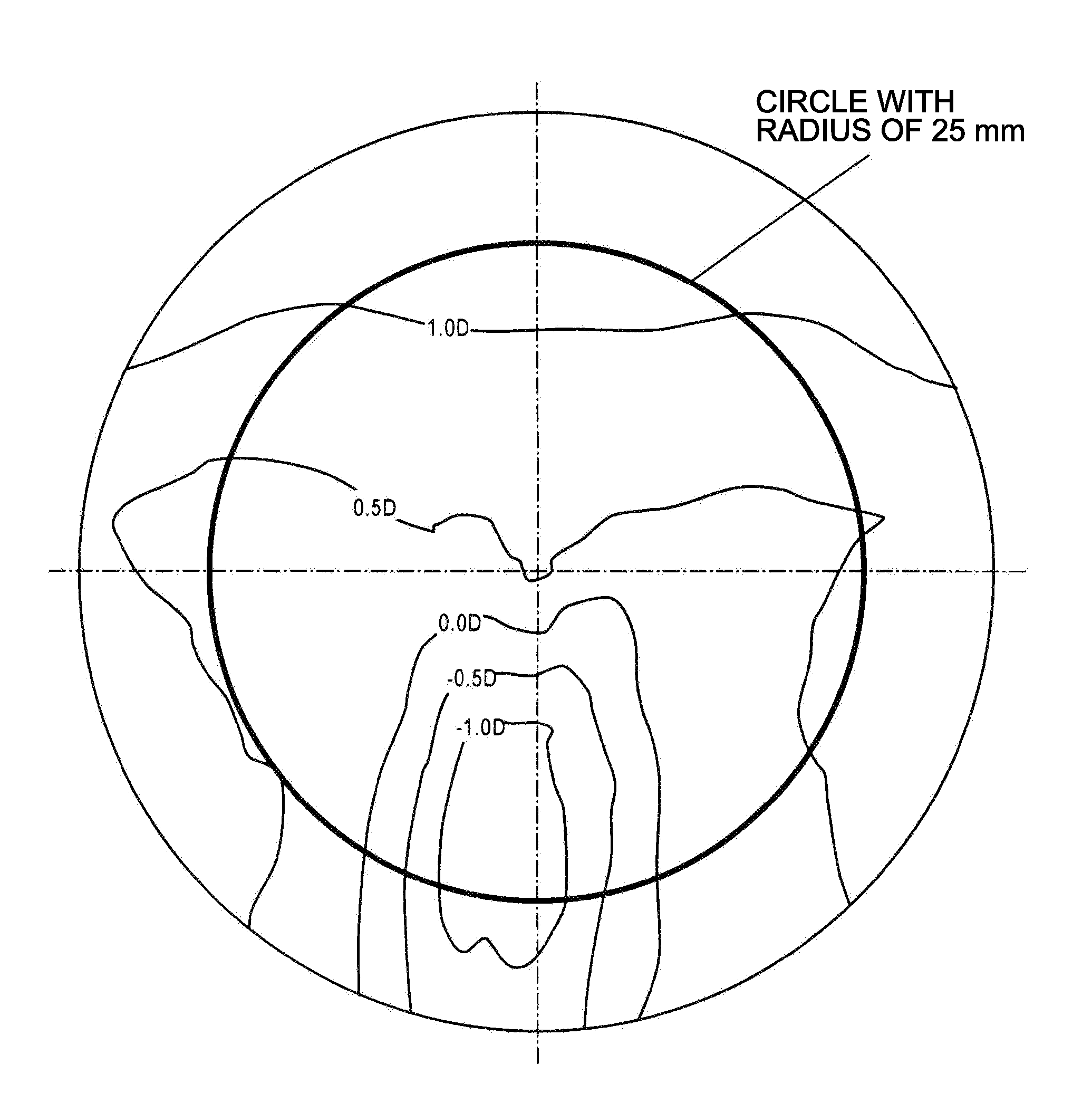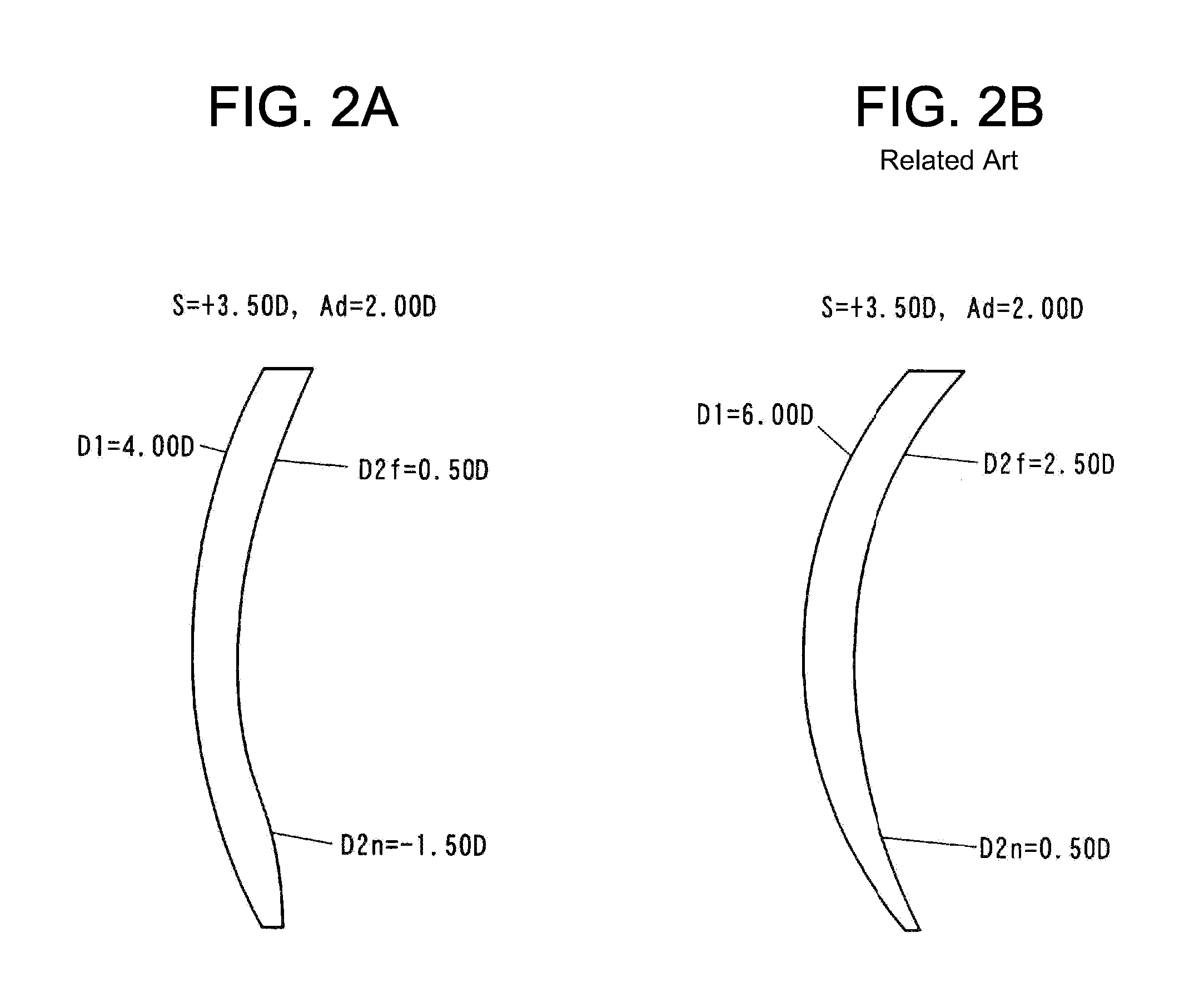Progressive-power lens
a technology of progressive power and lens, applied in the field of progressive power lenses, can solve problems such as degrading optical performance, and achieve the effect of minimizing the degradation of optical performance due to the shallower base curv
- Summary
- Abstract
- Description
- Claims
- Application Information
AI Technical Summary
Benefits of technology
Problems solved by technology
Method used
Image
Examples
example 1
[0057]A back surface progressive-power lens was designed in the following conditions: surface power of distance portion D2f is 1.00 D; surface power of near portion D2n is −1.00 D; addition power Ad is 2.00 D; power of distance portion S is 3.50 D; power of the object-side refractive surface (base curve) D1 is 4.50 D; and the near portion on the eye-side refractive surface was provided with a convex region that protrudes toward the eye. The refractive index of the lens material was 1.66. The lens material with this same refractive index was used in all the following Examples and Comparison Example. In this design, the near portion of a conventional, entirely concave back surface progressive-power lens was simply provided with the convex region and the increased astigmatism due to the shallower base curve was not corrected.
[0058]In this design, provided that the lens is circular with a diameter of 70 mm and a line connecting the geometrical centers of the object-side and eye-side ref...
example 2
[0061]A back surface progressive-power lens was designed in the following conditions: surface power of distance portion D2f is 1.00 D; surface power of near portion D2n is −1.00 D; addition power Ad is 2.00 D; power of distance portion S is 3.50 D; power of the object-side refractive surface (base curve) D1 is 4.50 D; and the near portion of the eye-side refractive surface was provided with a convex region that protrudes toward the eye. In this design, an aspherical surface was added to correct the increased astigmatism due to the shallower base curve.
[0062]In this design, provided that the lens is circular with a diameter of 70 mm, the overhang h that is the distance in the center line direction between the geometrical center of the object-side refractive surface and the outer edge of the object-side refractive surface was 4.2 mm, and the center thickness t was 4.1 mm. Since the aspherical surface was added, the center thickness t was thinner than that of Example 1 by 0.3 mm.
[0063]...
PUM
 Login to View More
Login to View More Abstract
Description
Claims
Application Information
 Login to View More
Login to View More - R&D
- Intellectual Property
- Life Sciences
- Materials
- Tech Scout
- Unparalleled Data Quality
- Higher Quality Content
- 60% Fewer Hallucinations
Browse by: Latest US Patents, China's latest patents, Technical Efficacy Thesaurus, Application Domain, Technology Topic, Popular Technical Reports.
© 2025 PatSnap. All rights reserved.Legal|Privacy policy|Modern Slavery Act Transparency Statement|Sitemap|About US| Contact US: help@patsnap.com



